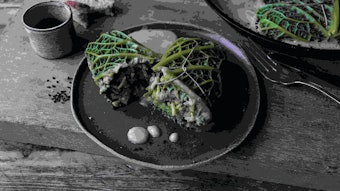Linalool oxide occurs in two distinctly different structural guises in nature. The most common structural form is based on a five member, furan-like ring structure (FEMA# 3746, CAS# 1365-19-1). The less common form is based on a six member, pyran-like structure (FEMA# 4593, CAS# 14049-11-7). Both types of linalool oxide exist as cis- and trans- isomers. Despite the differences in structure, the aromas of the different forms of linalool oxide have a strong family resemblance. The furan-based linalool oxide has a floral character, somewhat reminiscent of lavender, but this is dominated by the profile of black tea. The pyran-based linalool oxide is more obviously floral, with less resemblance to tea. In flavors, use of the furan-based linalool oxide is dominant.
Comparisons with other flavor materials are difficult because its character is somewhat unique. Nevertheless, it is interesting to compare linalool oxide to linalool (FEMA# 2635, CAS# 78-70-6). The floral note of the two chemicals is somewhat similar, but linalool oxide is notably brighter and much more herbal, with a strong character of tea. In nature, the two chemicals are often found together and in many flavors a subtle combination of the two can be extraordinarily effective. In combinations, a good starting ratio is two parts of linalool to one part of linalool oxide, but the best ratio depends to some extent on the flavor profile.
The dose rates given here are the levels of linalool oxide to be used in flavors that are intended to be dosed at 0.05% in a ready-to-drink taster, beverage or bouillon.










